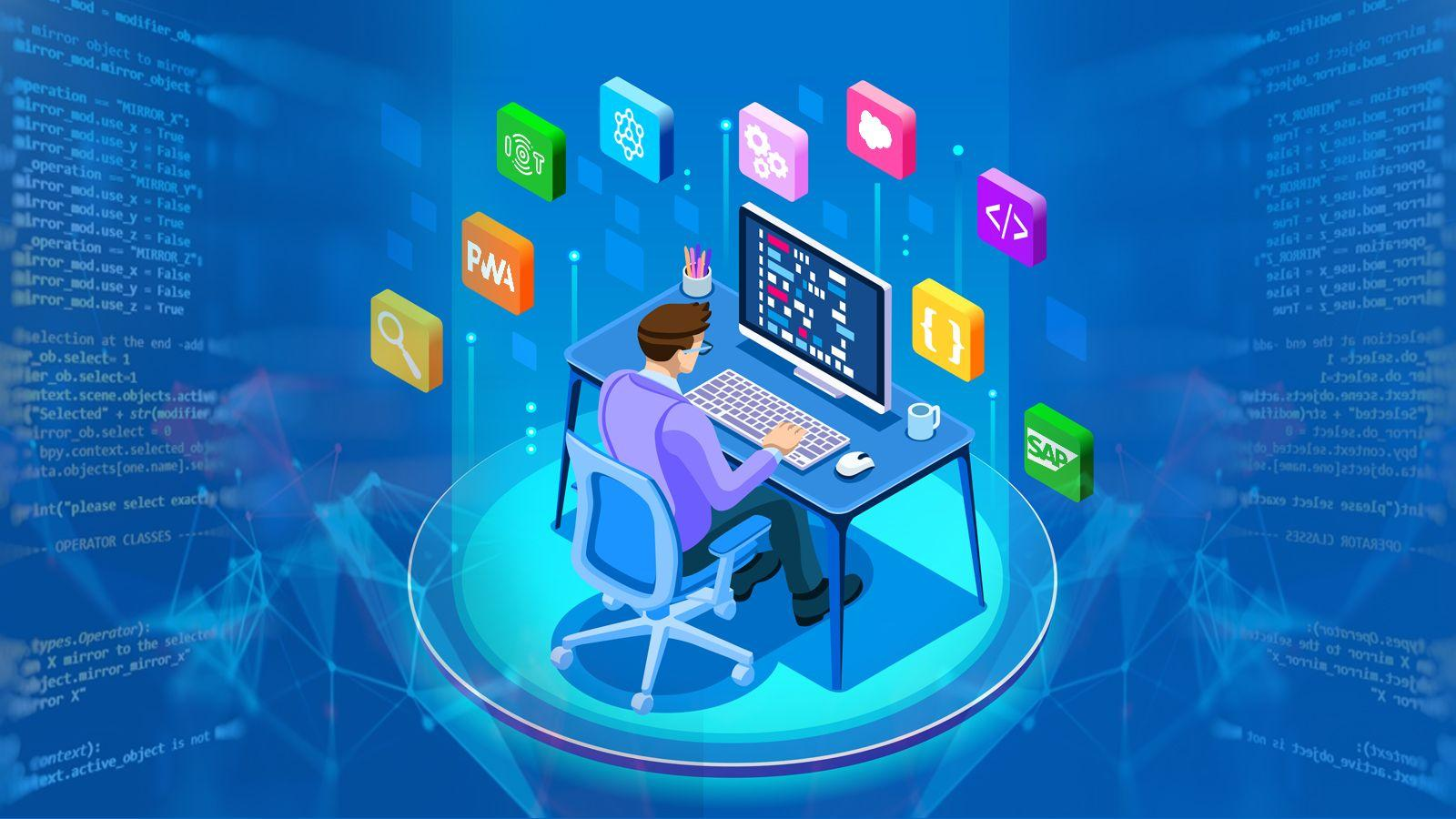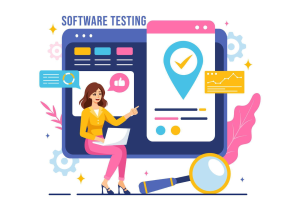Explore the ultimate roadmap for aspiring software developers. Learn how to master modern tech stacks, ethical coding, global collaboration, and craft scalable, resilient, and impactful digital systems.

Aspiring software developers today are not merely coders—they are architects of the digital future. Every line of code, every system design, and every ethical decision shapes societies, economies, and human interaction. The journey from novice to digital architect is a blend of technical mastery, creative thinking, and ethical responsibility.
-
Introduction: The Age of Code and Creation
-
Beyond Code: The Developer as Digital Architect
-
Mastering the Modern Tech Stack: A Living Ecosystem
-
The Mindset of a Software Craftsman
-
Learning as a Lifestyle
-
From Debugging to Discovery: The Art of Problem-Solving
-
Building Ethically in a Connected World
-
Collaboration and the Human Element
-
The Global Developer Economy
-
The Developer’s Legacy
-
Conclusion: The New Renaissance of Development
In every generation, there emerges a craft that reshapes civilizations. For the builders of the ancient world, it was stone and steel; for the modern visionary, it is code — the architecture of logic that builds our digital world.
Today, aspiring software developers are not merely technicians; they are architects of tomorrow’s societies — designing systems that govern economies, influence human behavior, and connect billions of lives.
But the journey from “beginner coder” to “digital architect” is not just a technical progression. It is an intellectual and creative evolution — a transformation that blends problem-solving, ethical awareness, and systemic thinking.
In an era defined by AI-assisted development, decentralized computing, and global collaboration, the modern developer’s challenge is not just to learn languages, but to speak the language of innovation — fluently, responsibly, and imaginatively.
1. Beyond Code: The Developer as Digital Architect
Once upon a time, architects designed cathedrals that touched the sky. Today’s developers design digital cathedrals — scalable systems that support millions of users, secure infrastructures that safeguard data, and applications that redefine industries.
Software development has transcended the boundaries of syntax and logic. It’s no longer about writing “working” code; it’s about designing systems that think, scale, and evolve.
A true digital architect considers structure, flow, and sustainability:
- Structure: How modular is the system? Can it grow without collapsing under complexity?
- Flow: How do users experience the logic? Is the architecture intuitive?
- Sustainability: Will the software endure over time, surviving version updates, scaling demands, and changing hardware?
The modern developer’s blueprint is not drawn on paper, but in code — where every function is a brick, every data model a foundation, and every integration a bridge connecting user to utility.
This is the new architecture — one of thought, precision, and empathy.
2. Mastering the Modern Tech Stack: A Living Ecosystem
In 2025, the developer’s toolbox is vast and ever-changing. What once required a team of specialists can now be orchestrated by an individual leveraging intelligent tools and frameworks.
The modern stack is not static — it’s a living ecosystem.
Front-end frameworks like React, Vue, and Next.js have turned user interfaces into experiences of interaction and emotion. Backend systems — Node.js, Django, Spring Boot — manage the invisible mechanics of performance and security.
Meanwhile, microservices, serverless computing, and APIs redefine scalability. A fintech startup in London can deploy globally in hours using cloud-native architectures, while a Silicon Valley SaaS company can integrate payment, analytics, and AI models through modular APIs.
Even the act of coding has evolved:
- AI-assisted tools such as GitHub Copilot and ChatGPT-based IDEs now act as collaborative partners, predicting intent and accelerating development.
- CI/CD pipelines automate deployment and testing, reducing human error and enabling continuous innovation.
Yet amidst this abundance, the true skill is discernment — knowing what to use, when, and why.
An architect does not use every tool in the box; they select the right one to build something timeless.
3. The Mindset of a Software Craftsman
Beyond technology lies craftsmanship — the pursuit of mastery.
The best developers treat code as artisans treat sculpture: with respect for form, function, and finesse.
Craftsmanship means writing code that not only works, but endures.
It’s about clarity over cleverness, intention over improvisation.
Principles like clean code, test-driven development (TDD), and design patterns are not just buzzwords; they’re disciplines of quality. They ensure that your code is readable, maintainable, and adaptable — that future teams can build upon your foundation without unraveling your logic.
A software craftsman leaves a signature of excellence — not through grand complexity, but through elegant simplicity.
It’s the difference between writing software that functions and engineering systems that flourish.
4. Learning as a Lifestyle
The half-life of technical knowledge today is measured in months, not years. What you master today could be obsolete tomorrow — unless you adopt a mindset of lifelong learning.
For aspiring developers, learning isn’t a phase; it’s a lifestyle.
Open-source communities have become global classrooms where mentorship, feedback, and collaboration transcend borders. Contributing to projects on GitHub or Stack Overflow exposes developers to diverse styles, philosophies, and cultures of coding.
Platforms like freeCodeCamp, Udemy, and Coursera democratize access to expert knowledge.
And yet, the greatest lessons come not from tutorials — but from real problems.
Building projects, experimenting with APIs, breaking systems, and fixing them — this is how theory becomes instinct.
As the UK’s Government Digital Service (GDS) teaches its developers: “The best way to learn about users is to build with them, not for them.”
Learning is not just skill acquisition — it’s a commitment to curiosity.
5. From Debugging to Discovery: The Art of Problem-Solving

Every developer eventually meets the bug that refuses to die — the elusive glitch that resists all logic.
But what separates amateurs from professionals is not how quickly they fix it, but how deeply they learn from it.
Debugging, at its heart, is digital forensics.
Each error message is a clue; each unexpected behavior, a witness. The process demands patience, reasoning, and creativity — much like a detective reconstructing a scene from fragments.
In debugging, you encounter your own mind — how you think, assume, and design.
Over time, what begins as frustration transforms into fascination: an appreciation for how systems behave under pressure.
This shift in mindset is profound.
When you see debugging as discovery, every bug becomes a teacher — and every solution, a step toward mastery.
6. Building Ethically in a Connected World
With great power comes great responsibility — and today’s developers hold immense power.
A single line of code can influence millions of users. Algorithms determine credit scores, job visibility, even justice outcomes.
In this context, ethical development is no longer optional — it’s essential.
Aspiring developers must learn to balance innovation with conscience:
- Design for accessibility, ensuring that every user — regardless of ability — can participate in the digital world.
- Write privacy-respecting code that protects user data, not exploits it.
- Build transparent systems that can be audited, explained, and trusted.
In the UK, the push for ethical AI frameworks and inclusive design has made social responsibility part of the development process.
In the US, companies like Salesforce and Microsoft are leading ethical coding initiatives that prioritize fairness and accountability.
To be a modern developer is to be a technologist with empathy — understanding that every digital decision has a human consequence.
7. Collaboration and the Human Element
Code may run on machines, but development thrives on human collaboration.
The myth of the “lone genius” programmer has been replaced by the reality of agile teams, where communication and empathy matter as much as logic.
Collaboration tools — Git, Jira, Slack, Figma — have become the shared canvas of modern creation. They transform isolated workflows into collective intelligence systems.
A developer who can explain ideas clearly, accept feedback gracefully, and contribute constructively is more valuable than one who simply writes perfect code.
After all, technology is a social construct — it lives at the intersection of human intention and computational precision.
As one Silicon Valley CTO put it: “Our best developers are our best communicators. They don’t just code features — they build understanding.”
8. The Global Developer Economy
In today’s borderless digital economy, the aspiring developer stands on a global stage.
What you build in Manchester may serve users in New York. What you debug in Austin may influence fintech innovation in London.
UK: Fintech and Ethical Innovation
The UK’s developer ecosystem thrives on precision and trust. From London’s fintech corridors to Manchester’s tech startups, British developers have mastered the art of combining regulatory compliance with creativity.
Government initiatives like Tech Nation and Digital Skills Partnerships have made the UK a hub for ethical AI, data protection, and user-first design.
US: Experimentation and Scale
Across the Atlantic, the US represents the scale of ambition.
From Silicon Valley’s experimental startups to New York’s SaaS giants, American developers embrace risk as a learning mechanism.
The culture of open-source contribution and venture-backed innovation creates a sandbox for constant reinvention — where “failure” is simply another form of R&D.
Together, these ecosystems demonstrate that success for aspiring developers is not defined by geography, but by mindset.
The most successful coders are not those who know the most frameworks, but those who think globally, act ethically, and adapt endlessly.
9. The Developer’s Legacy

Every developer leaves behind more than commits and code — they leave digital legacies.
The systems we design today will outlive us, influencing economies, governments, and generations.
Just as architects’ buildings shape skylines for centuries, developers’ architectures shape the invisible infrastructure of society — the algorithms that define opportunity, the platforms that define communication, the tools that define progress.
The question for aspiring developers, then, is not “What can I build?” but “What will my work mean?”
Legacy in development isn’t measured by fame, but by function and longevity:
- Did your code make someone’s life easier?
- Did it enable fairness, accessibility, or creativity?
- Did it stand the test of scalability and time?
To code is to contribute to civilization — and that is the most profound legacy of all.
Conclusion: The New Renaissance of Development
The modern software developer is both artist and engineer, philosopher and builder, technician and visionary.
To become the architect of tomorrow is to embrace the duality of creation — logic fused with imagination, precision balanced by empathy.
The roadmap for aspiring developers in 2025 is not a linear path from “beginner” to “expert.”
It’s an ever-expanding circle of curiosity, one where each new skill deepens understanding rather than ends it.
The world doesn’t just need more coders — it needs architects of trust, engineers of empathy, and builders of the human future.


